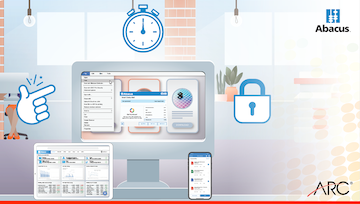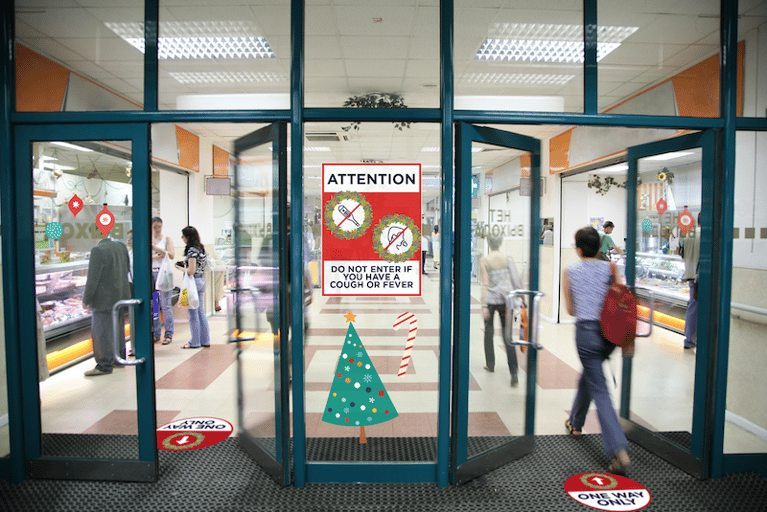The overall success of every construction project is inextricably linked to successful communication between owner, architect, general contractor, and subcontractors.
Yet when it comes to printing… owners, architects, contractors, and subs often choose to print their blueprints and drawings in black and white rather than paying slightly more to use color.
Ironically, though monochrome prints have a cheaper price tag compared to color prints, they’re actually more expensive in the long run. That’s because black and white prints cause communication issues that are far more expensive than any marginally higher price you might pay for color prints.
In fact, according to a study by Lyra Research, just $1 invested in color printing can yield up to $4 in savings.
Put simply, color prints foster strong communication throughout the project to create more value for all stakeholders.
The Downstream Value of Color
So if printing in color versus monochrome results in a 4X return on investment, why isn’t everyone doing it? The simple answer is: because many in the AEC industry don’t know any better and, until recently, printing in color wasn’t as economical because the technology just wasn’t there.
Moreover, the value created by color prints is spread out across the entire project lifecycle, from bidding the project out and responding to RFIs to communicating between the job site and the office. So if you don’t look for it, the value of printing in color isn’t immediately apparent. But, by taking a step back to understand the value of color to the entire project, you can see just how much better off every project stakeholder could be if everyone got on board with adding color.
From Design to Bid
We’ve written at length about the MacLeamy Curve, which demonstrates how, as a project progresses, it becomes increasingly difficult and costly to make changes, regardless of the project delivery method.
Generally, the most visible examples of the MacLeamy Curve in action are costly change orders and reworks that set back project timelines. But the change order is a symptom, not the disease. And that disease is poor communication.
Color prints can cure the poor communication that results when the bidding process begins because it allows the design team to:
- More clearly show updates to documents.
- Highlight corrections, priorities, concerns, and warnings.
- Communicate dimensional information.
By using color, architects can provide drawings that communicate details of the project more effectively. This saves time in the bidding process which means that architects can spend fewer resources on managing RFIs.
Since color improves communication of constructability details, contractors can submit more competitive bids because they don’t have to build in such a large contingency for estimating mistakes. This creates more project value for the owner that trickles down to all stakeholders.
Fewer Mistakes in the Field
Using color in drawings and blueprints makes it easier for builders to get and stay up to speed from the bidding process through to construction. Of course, even with impeccable communication early on, some changes are inevitable. But again, color makes communicating these changes far easier and more effective in much the same way that color makes it easier to communicate during the bidding process.
The impact of this can’t be understated.
Consider that between 70 and 90 percent of construction projects exceed their original planned cost by 50 to 100 percent of the original budget and 21 percent of the time, poor exchange of information and communication causes errors. Yet, color documents, because they’re more easily understood and the information is retained at higher rates versus monochrome documents, can reduce errors by up to 80 percent.
Communicate Designs to Clients
For architects, communicating and selling their designs to clients who aren’t well-versed in construction design can be a challenge. But printing drawings in color can provide a common language in which the architect and owner can communicate more effectively.
Jim Carlson, Principal of JF Carlson Architects, experienced the power of color in his drawings firsthand. Carlson was actually forced into printing his drawings—which he usually creates by hand with mylar and pencil—because of a particularly unique client.
The client was a couple who’d purchased a condo to remodel and they couldn’t stop arguing about various design choices. Carlson quickly recognized the problem; the couple was having trouble understanding his drawings.
When he printed the drawings in color, he said, “I saw the benefits right away. My drawings popped out—it looked better. They were easier to understand.”
Ultimately, adding color to his drawings helped Carlson resolve his clients’ disputes which helped him get the job done quickly and efficiently. Now, Carlson regularly adds color to his drawings.
Separate Yourself from the Competition
For now, injecting color into monochromatic prints and drawings is a competitive advantage that improves every aspect of the design, bid, and build project delivery method. But that’s partly because, until now, the technology wasn’t there to make printing construction documents in color so cost-effective.
Architects and contractors who have seen the benefits of color in action, like Jim Carlson, are catching on. And it won’t be long until the competitive advantage of using color turns into the new standard for construction documents.
Separate yourself from the competition by streamlining communication throughout the construction project lifecycle. Learn more today about ARC’s Smart Color printing solutions.





